Hisense U7K Reviewed at $549.00 (55")
Product Name: Hisense U7K
Product Description: 2023 4K Mini-LED ULED TV
-
Build Quality - 9/10
9/10
-
Image & Audio - 8.6/10
8.6/10
-
Connectivity - 9/10
9/10
-
OS & Smart Features - 9.1/10
9.1/10
-
Price / Quality - 9.1/10
9.1/10
Summary
Reviewed at $549.00 (55″)
Pros
- Very good brightness
- Great contrast and colors
- Excellent gaming features
- Affordable price
Cons
- Blooming still slightly visible
- Not good viewing angles
- Only 2 HDMI 2.1 ports
- Average audio performance
Cheapest Places to Buy :
*We are a reader-supported website. When you buy through links on our site, we may earn a small affiliate commission at no extra cost to you. Home Media Entertainment does not accept money for reviews.*
Recently we had the chance to review the new Hisense U8K which got great scores in our tests. It was one of the best value for money mini LED TVs in 2023. So today in our Hisense U7K review we will test their next in line mini LED TV and determine if it can also be a competitive model in the mini LED arena.
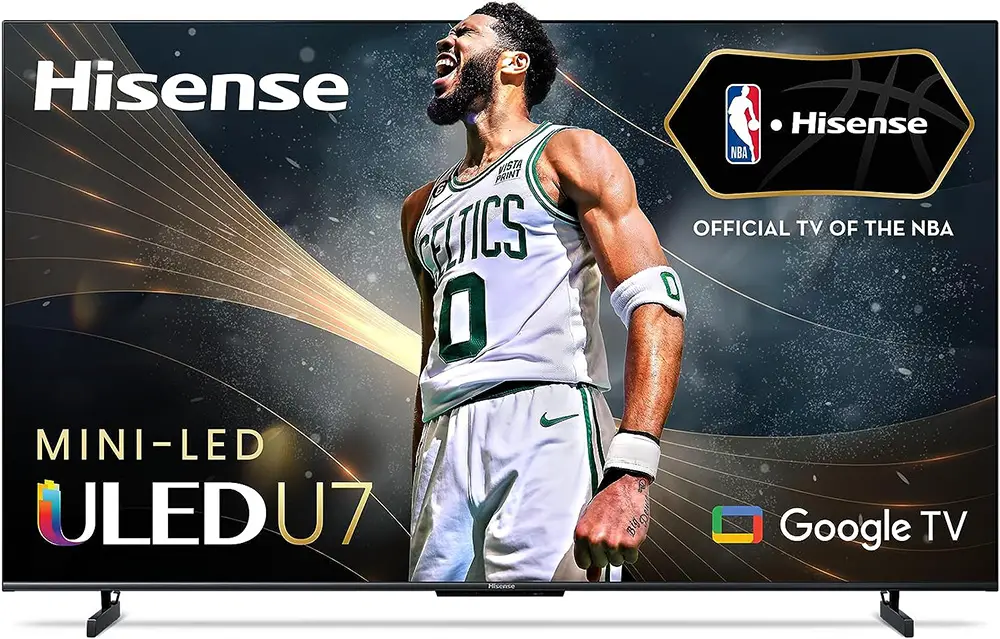
The U7K is supposedly replacing the 2022 Hisense U7H which unfortunately we did not test last year. So we cannot really compare the two models in this review. We should also point out that we have the 55″ for the North America market for testing. We do not know if the U7K in the UK, EU and other markets is the same model so we cannot really talk about them. Hisense is known for using the VIDAA OS in Europe instead of Google TV so there are definitely some differences.
Now, let’s go over the specs real quick before we start our actual testing. The TV is using a native 120Hz VA panel, that can go up to 4K@144Hz, comes with a mini-LED backlight with local dimming while the Hi-View Engine takes processing duties. Hisense added support for both HDR10+ and Dolby Vision while Dolby Atmos is also available. Lastly the TV comes with the newest version of Google TV for 2023.
Specs wise the Hisense U7K is not all that different from the flagship U8K. But obviously there are differences in the performance of these two. So let’s see what reductions we get for the U7K’s lower price.
Design
It terms of design the new U7K is your typical Hisense design. At this price point it doesn’t try to impress but it is not bad either.
Build quality seems to be up to the usual standards. The TV was sturdy enough and construction was satisfactory. The TV is a combination of metal and plastic and we didn’t see any defects on the test unit we had.
Measurements
Thickness of the TV is about 2.9″ (7.2 cm) which is ok and really close to what the U8K measures. Hisense’s models may not have this luxury grade slim design of Samsung top tier TVs but they are good enough nevertheless.
As for its black borders these measured exactly 0.39″ (1.0 cm) which is about the standard in this category.
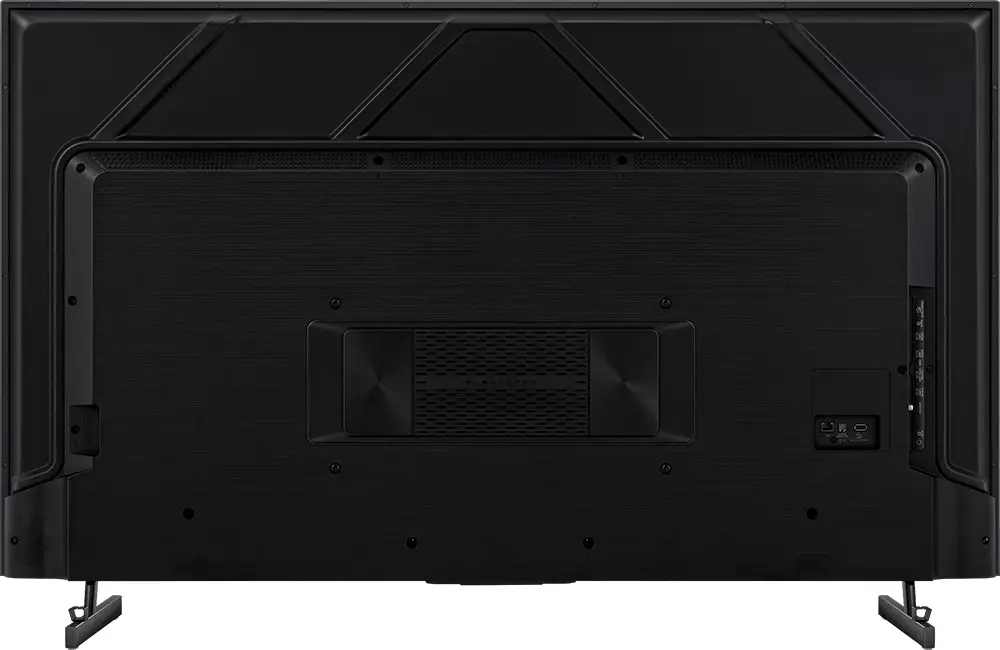
Back Side
The back side features a top metallic part and a bottom plastic one. The plastic part is obvious thicker because it is the one that includes all the electronics and port connectors.
All the connections look sideways on the right side while naturally we find the power connector towards the left. In the middle we find the characteristic subwoofer with the four VESA holes for wall mounting the TV.
As far as cable management you get special clips that are built-in the back of the legs so you can group them all together.
Stand
The stand that the U7K uses is the standard bench type stand. The legs are again made of metal and are positioned almost at the edges of the TV so make sure you have a big enough furniture for it. If they don’t fit do not worry as the TV has a second narrow position available which is ideal for small surfaces.
The stand leaves around 2.4″ of gap between the panel and the surface which is just enough for most soundbars. But since there are some models that are a bit taller than this you always measure to be on the safe side.

Remote
As for the remote the one that comes with the U7K is the same one we used in our Hisense U8K review.
All buttons are made of rubber while their layout is the same. So are the six dedicated buttons at the bottom for Netflix, Amazon Prime, Youtube, Disney+, tubi and Apps.
The remote is made out of plastic, its feel is in general good and while it is IR based, which means it needs line of sight to work, it can also be connected through Bluetooth in order to use its microphone and voice commands feature.
Honestly the remote Hisense uses is a bit cheap. Compared to some other brands it does not have this premium feel to it. But in terms of ergonomics and practicality it is up there with the rest.
Video Quality
Processor technology used
The U7K uses Hisense’s proprietary Hi-View Engine 4K which is a quad core CPU. As with most TVs we don’t know many details of this chip other than what Hisense adds in their promotional material.
This processor seems to come with the standard feature set like 4K upscaling and Digital Noise Reduction capabilities.

Resolution and Up-scaling
As always first comes our upscaling testing. We run a few videos in different resolutions ranging from ultra low quality ones, some 480p DVDs, some in 720p and obviously 1080p resolutions. We tried broadcasting signals, streaming content and discs to have a better, all around idea of the TV’s capabilities.
In terms of low resolution upscaling the U7K was really good considering its price. We could even say that the U7K performed really close to its bigger brother, the U8K with a lot of details being retained during the up-scaling process. Text was also sharp and very distinct, even with smaller font sizes.
Equally good was the TV’s low quality streaming processing. We did see some macro-blocking but this was very subtle and certainly did not bother us during this test. Loss of quality was also kept to a minimum.
Audio Processing
The TV is using a pretty standard 2.1 channels audio system with the usual audio processing features that Hisense likes to include in many of their releases. But we will talk in more detail about these in our dedicated audio section a bit further down our article.
Lighting technology used
The U7K is using a mini-LED backlight with local dimming similar to the U8K. What is different is the amount of dimming zones available compared to Hisense’s flagship.
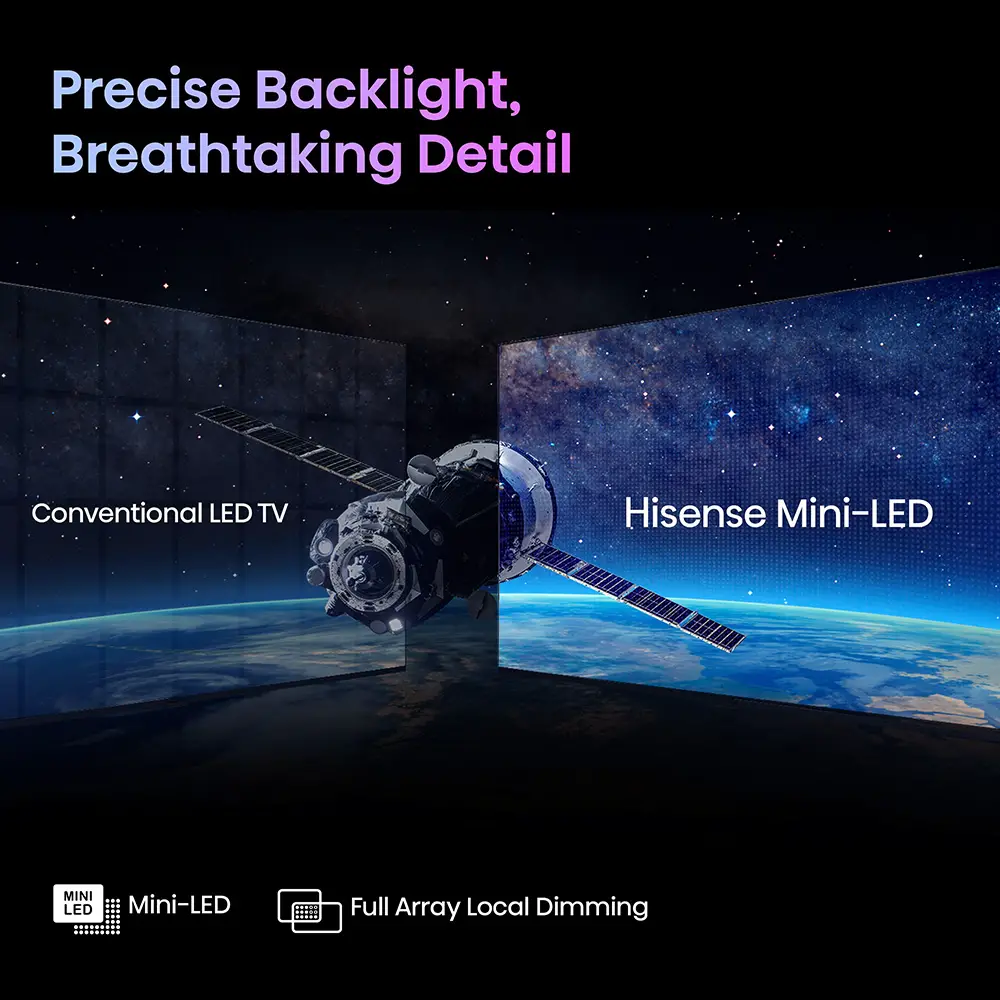
mini LED Explained
The U7K’s mini-LED backlight is accompanied by Hisense’s ULED technology that uses specialized local dimming algorithms to control the thousands of tiny, high-density Mini LEDs with much better precision and independence than any previous FALD system could.
The major advantage of mini-LED is that its LEDs have 1/50 the size of a conventional LED. Instead of using a lens to disperse light, and a package to fix the LED in place, mini-LED has incredibly thin micro layers filled with many more LEDs. This way this technology has much better and more precise control of the densely packed LEDs, preventing what was the most obvious disadvantage of previous LCD backlight systems, blooming.
Keep in mind that while mini-LED technology is vastly superior to any other LCD backlight system so far it is not alleviating the blooming problem completely. And it is still very much dependent on the number of zones that have been added to each panel along with how efficient the dimming algorithms are.
Number of Dimming Zones
The 55″ of the U7K that we have for testing seems to come with 240 dimming zones. Naturally bigger sizes come with more zones, with the 85″ claimed to have more than 1,000 dimming zones available.
Blooming & Zones Transitioning
In our blooming tests the U7K was good but fell short of the great performance we saw in the U8K. Blooming was visible but it was not very severe to be bothering. In specific scenes where a bright highlight would appear on a complete black background you will see a visible halo around the object. But again, the U7K did a really good job at keeping this at acceptable levels.
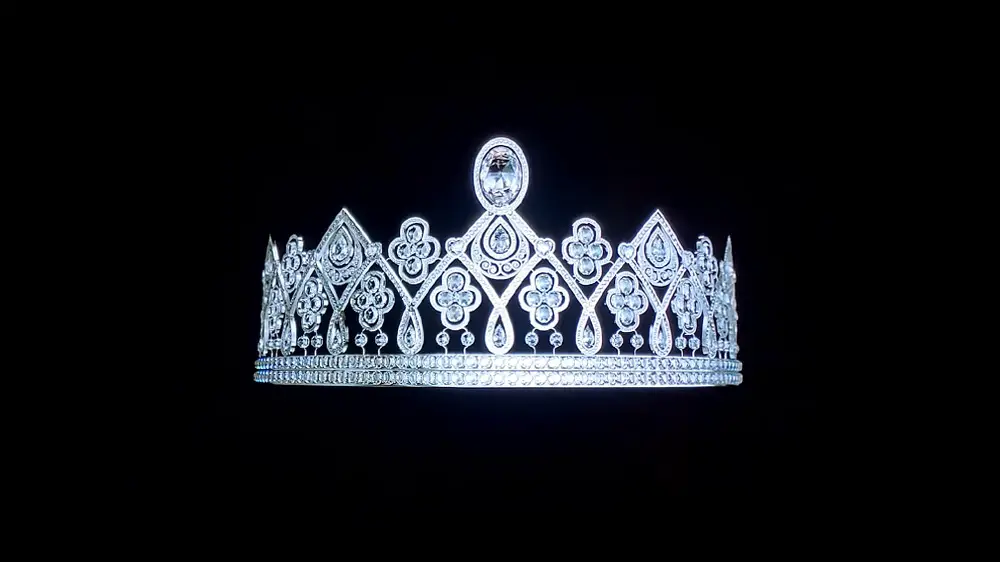
The same effect was visible with subtitles. When these appeared in a dark background blooming would become apparent.
As for zones transitioning the TV performed really close to its bigger brother. The two main effects of a slow algorithm is the darker leading edge of a fast moving object and ghosting that appears behind it because the zone turns off very slow.
Both of these you will see in the U7K but these effects are not so severe to be visible all the time. You are going to notice them only with extremely fast bright objects in a completely dark background.
Obviously such content is an extreme scenario and not very common. In most cases and most content we tried the zone algorithms did a magnificent job at switching the zones on and off very fast making the above mentioned problem a very rare case to be seen.
Brightness / Contrast
The U8K we reviewed recently managed to impress us with its brightness output. Can the U7K do the same with its less capable backlight? Let’s see.
SDR and HDR Measurements
First test is the SDR brightness over a 10% window and the number we got was 545 nits which is really good for any SDR content.
We then switched to HDR content and in our HDR brightness over a 10% window test we measured 798 nits.
Although these numbers are far from what the U8K can do they are still very respectable. Therefore the U7K can perform really good in almost all room conditions and different light environments.

Automatic Brightness Limiter (ABL)
As with most TVs nowadays the U7K comes with an Automatic Brightness Limiter (ABL). This system lowers the overall brightness of the screen when large parts of it become very bright for a long period of time. This may not be very obvious when watching a movie for example. But is more obvious with bright static images, or if you use the TV as a computer monitor.
The ABL on the U7K was very subtle and not so obvious. The image would still become dimmer compared to it before the ABL kicked in. But as we mentioned above this will happen only if you leave a bright static image for some time. And even then the TV has enough brightness to keep the image bright enough.
EOTF Tracking
Brightness levels did follow the EOTF reference values really close but the curve was not perfect. In all scenes the TV appeared to be slightly brighter than it should. Not by much, but the difference was there.
Reaching its peak brightness it will smoothly roll off in order to maintain as much details as possible.
Contrast Performance
In terms of contrast the U7K was great with deep blacks and bright highlights. Native contrast was very good due to the use of a VA panel being used.
And with its local dimming feature the TV’s contrast improves a lot. As a result we get very deep blacks making the image to look amazing.

Viewing angles
Using a VA panel means that the U7K is not very good with viewing angles. VA panels in general have trouble with this so it’s not a problem of the U7K in particular. Some manufacturers tend to use extra layers in order to improve this problem but this TV doesn’t seem to be using any similar technology.
As such the best angle we could measure on the U7K was around 30 degrees at maximum. Anything more and the image quality degrades a lot. Therefore the U7K cannot be considered a family friendly TV where many members will be watching at the same time from extreme angles.
The TV uses a semi-gloss coating and in combination with the relatively high brightness, it can fight off most glare and light reflections.
Since what is acceptable image quality is very much a personal matter, and considering all the above, we would suggest you to try it out in a local store in order to be sure if it is acceptable by your standards or not.

HDR support
Here things are pretty much what we expected. With the big three (Samsung , LG, Sony) taking specific sides, options are more limited. Fortunately there are other brands like Hisense and TCL that still support all HDR formats, as it should be with all of them.
As such the U7K supports not only the basic HDR10. But also HLG which we find mostly in streaming content and both HDR10+ and Dolby Vision which use dynamic metadata for a much better image quality.
The TV also supports Dolby Vision IQ and HDR10+ Adaptive. These two take into account the environment lighting and make HDR more accurate depending how dark or bright the lighting is within your specific room light conditions.
These use the TV’s built-in light sensor and thankfully this is a feature that you can turn off if you really want to appreciate the brightness capabilities of this unit. As enabling it most of the time will dim the picture far more than what we would like.
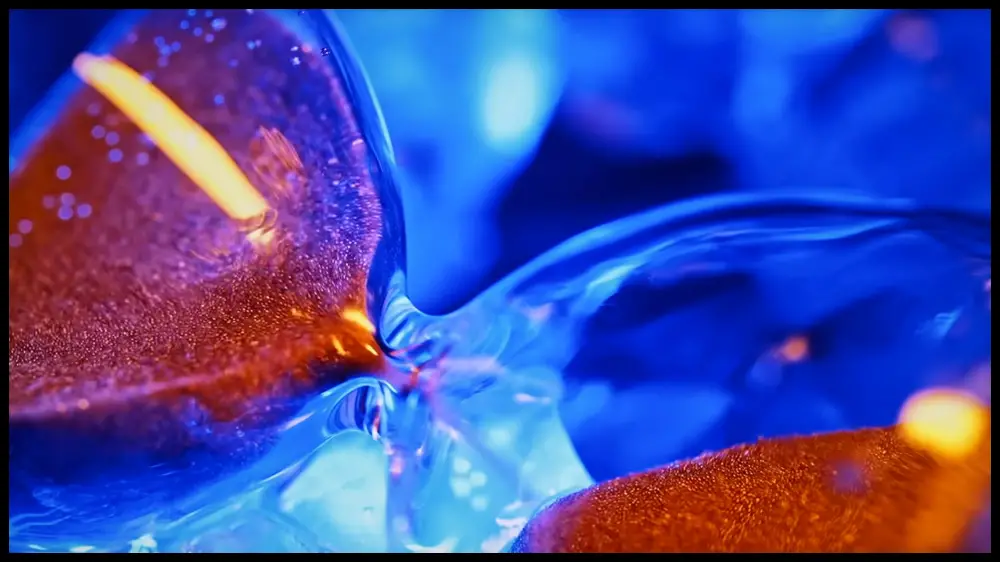
Color coverage
Let’s talk about colors now and first we will measure the TV’s color coverage. The U7K belongs in the ULED family of TVs meaning it comes with Quantum Dot technology. This results in the TV supporting wide color gamut and thus display more accurate and lifelike colors.
In our measurement tests the TV reached about 97% coverage of the DCI-P3 color space. On the wider REC.2020 color space we got a coverage of 79%.
These numbers are great and according to our numbers they are essentially the same as the flagship U8K.
DeltaE Errors
Next we test the TV’s color accuracy.
Before calibration the TV had really good color accuracy. Most colors managed to stay under the DeltaE limit of three and only blue colors were above it. White balance was way off and was in need of adjustment. On the other hand color temperature was perfect. Gamma was almost on point but still not perfect.
After calibration we were able to correct most of the above errors. But blue colors were still a bit off compared to the rest. Color temperature and gamma were perfect and white balance was vastly improved.
Obviously after calibration the TV performed far better. But even its out-of-the-box settings were amazing. So if you are not very fond of going deep into such a calibration process fear not. The TV is good enough even with its default settings and will surely satisfy you with its colors.

Color Gradients
Color gradients were really good. We only noticed some minor banding in most darker shades but this was really subtle. And obviously it was not so obvious with real world content. The TV did very well here.
There is also a Digital Noise Reduction function in case you do see it. But if you enable it some detail is lost and in general we prefer not to use this feature very much.
Panel Uniformity
Grey and black panel uniformity of the U7K were very good. With a grey background we did notice that the edges were slightly darker than the center. This is an effect called vignetting. But again, this was very subtle and not obvious with real world content.
Black uniformity was equally good. We didn’t notice any bright patches or clouding in our tests and the screen was very clear overall. We tried this test with both local dimming on and off and we noticed that when turned it off there was a bit of backlight bleed. But with the local dimming turned on this disappeared completely.

Motion performance
Next we have our motion performance tests. The TV supports not only 120Hz but also 144Hz which slowly becomes standard in many top tier TVs.
In terms of motion the TV had very stellar performance. Blur was very subtle and this has to do with the U7K’s very fast response times. On the other hand stutter performance was obvious with low frame rate content. This can be reduced only by enabling motion interpolation. The TV can also remove judder from either 24p or 60p content, which is great for any kind of content.
Motion Interpolation
The TV obviously could not be without motion interpolation. This feature can smooth motion and remove blur and judder from fast camera movements. Motion interpolation on the U7K works up to 120Hz and from all the content we tried it performed above average.
With slow paced scenes and slow camera movements motion interpolation was capable of smoothing motion nicely. Obviously with more demanding scenes the quality of its interpolation falls dramatically which was to be expected.
Obviously using very aggressive settings will make the “Soap Opera Effect” to appear so you have to adjust the settings accordingly. We always like to keep this at a minimum, just enough to smooth motion without any undesirable effects.

Black Frame Insertion (BFI)
Black Frame Insertion (BFI) is also available. With BFI the U7K was able to smooth motion considerably. But as always this feature leads to some undesirable effects.
The most obvious one is that brightness takes a visible hit. Which is detrimental with any TV that cannot achieve extremely high brightness output. Also while the BFI feature works for both 60Hz and 120Hz content we did notice some image duplication in certain scenes.
Overall Motion Impressions
It’s impressive that the U7K was almost on the same level as the flagship U8K. Each TV has its own set of strengths and weaknesses here but overall we could call them equal. The U7K certainly performed way above what its price will make you think.
Input lag Measurements
Next we will test the TV’s input lag performance.
From our tests the U7K measured an average of 14.4ms input lag in both 1080p and 4K resolutions at 60Hz. This is very close to the U8K, which was to be expected. At 120Hz we measured 5.5ms in both 1080p and 4K resolutions which again is as good as it gets.
With the TV officially supporting 144Hz we also tested this in 1080p and 4K resolutions and the numbers we got were 4.8ms and 5.3ms respectively. Just to note here that both the Playstation 5 and Xbox series X support up to 120Hz. So in order to enjoy this higher frame rate you will need a high profile gaming PC.

Obviously all the above measurements were taken with the available Game mode. Outside Game mode we got 109.2ms which is a bit high, even for slow paced offline games.
One last thing to note here is that the U7K supports 1440p resolution also. Additionally this is one of the few TVs that can even do 1080p@240Hz. Even with this resolution reduction it is nice to see another framerate option that you can use.
Other Gaming Features
The TV also comes with Auto Low Latency Mode (ALLM). This can be used with any devices that support that like the PS5 and Xbox consoles and can greatly benefit users.
Unfortunately, as with all Hisense TVs there is no HGiG mode.
The TV also comes with Game Bar which is similar to what Samsung, LG and Sony started to offer in their TVs the last couple of years. This is a special menu that you can find valuable info during gaming. Information like FPS, HDR, VRR and other settings are all available with the press of a button.
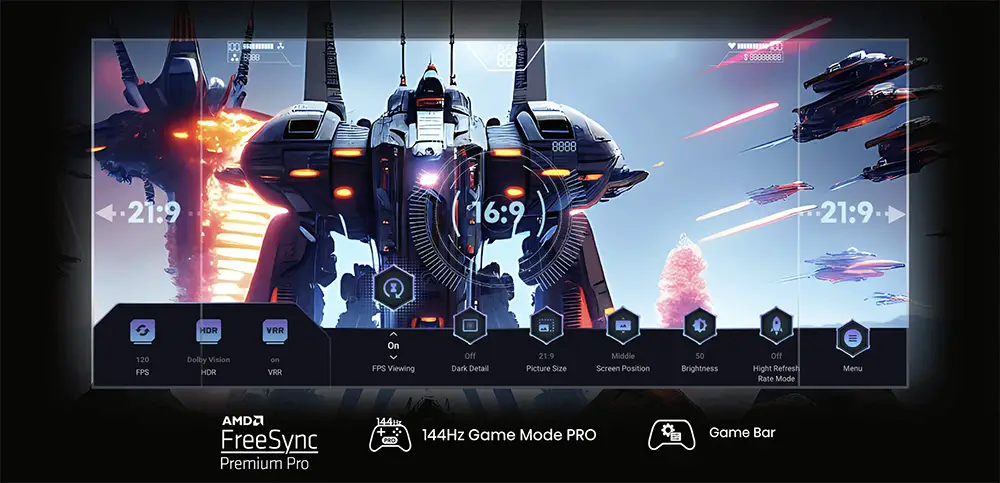
VRR Support
The U7K comes with support for all VRR technologies including HDMI Forum VRR, AMD FreeSync and NVIDIA G-Sync. VRR can work up to 144Hz but unfortunately it doesn’t work when you choose 1080p@240Hz.
Another thing that you should be aware of is that the U7K currently has trouble when you try refresh rates above 120Hz with an NVIDIA graphics card. This is the exact same problem we have seen in some other Hisense and TCL TVs.
Trying Out a Few Games
Onto our gaming testing and for this review we tried F1 2022 along with The Callisto Protocol. F1 2022 can do 120Hz but The Callisto Protocol is only a 60Hz game in performance mode.
In both games the TV performed remarkably. The Callisto Protocol is a very slow paced game with dark corridors and more slow gameplay even during action. F1 2022 on the other hand is an incredibly demanding game when it comes to reaction times. In both cases we had no problems whatsoever. All our commands registered immediately on screen and we didn’t notice any slow reaction times.
Overall Image Quality Impressions
The U7K may not be as impressive as Hisense’s flagship this year. But it doesn’t have to. With this low price the U7K is as impressive as it gets in its respective category and this is what matters the most.
There are so many things to like in the U7K. It does have a few shortcomings but these are few and far between to really make us disappointed. Hisense has a true winner in their hands.

Audio Quality
Let’s move onto our audio section next. The U7K comes with a pretty standard 2.1 channels audio system which is a step down from the 2.1.2 channels found in the U8K. This essentially is similar to the 2022 Hisense U8H.
Audio System – Channels & Power Rating
The 2.1 channels audio system in the U7K is basically missing the top Atmos channels. And because the TV does support Dolby Atmos sound this means that the overhead layer is less accurate and distinct. Dolby Atmos without dedicated up-firing drivers means that virtual processing is at play in order to render over-the-head audio.
The 40 watts rating is divided into 2 x 10 watts for the two main channels and 20 watts for the subwoofer.
Audio Formats Support
There is support for Dolby Audio, Dolby Atmos, DTS Digital surround sound and IMAX Enhanced. But as always no matter how fancy all these may sound the TV cannot really create a true cinematic experience. No TV can do that and the U7K is no different.
Also keep in mind that the U7K can pass-through not only Dolby Atmos but also DTS:X signals from its eARC port. So this way you can playback all kinds of content and not limit yourself only to Dolby’s solution.
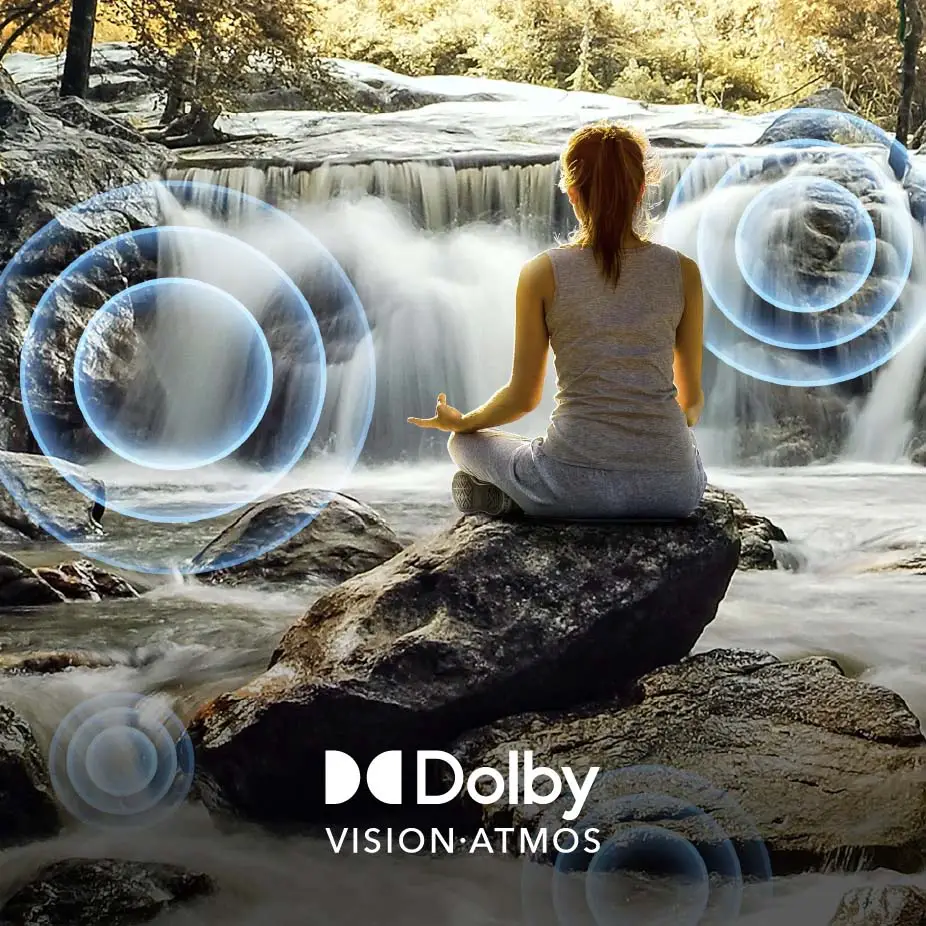
Audio Features
There are a few sound modes to choose from, as always, but these doesn’t change much in terms of the actual sound output you will get. You also have the ability to output either from the TV speakers, through the eARC connection or even to some Bluetooth enabled speakers.
The U7K is also WiSA Soundsend certified so if you have any WiSA audio speakers then you can connect them to the TV itself.
Overall Audio Performance Impressions
The U7K’s audio is definitely not on par with its image quality. Yes, for casual use it will be more than ok. Dialog is distinct and the TV can get loud enough. This means than anything from news broadcasting, to sports and casual TV series you will have no problem at all.
But when it comes to surround heavy blockbusters the TV’s audio falls short of its visual merits. The TV lacks depth, extension and any kind of true surround action. Its subwoofer does help a bit with the low end but even this falls short when heavy action kicks in.
So our suggestion is this. If you want sound that will be on par with its visuals then a full surround system should be a definite option. If this is out of the question then at least a good performing Dolby Atmos soundbar should greatly enhance the experience you will get.

Ports and Connectivity
As we mentioned above the U7K comes with two sets of ports located at the right side of the back panel.
Those looking sideways include four HDMI ports, one USB port, the antenna/cable connector, an audio/video input jack that needs a special adapter to be attached, a headphones output and one service jack.
At the other group, looking backwards, we find an Ethernet connector, a digital optical audio output and a second USB port.
HDMI Specifications
As with all Hisense TVs, we get two HDMI 2.1 ports along with two more older HDMI 2.0 ones. Unfortunately Hisense is on the same boat as Sony and TCL and have only two HDMI 2.1 ports due to the use of MediaTek’s SoC.
And to make matters even worse, one of them is also the one with ARC/eARC functionality. So if you plan on using that then you are left with a single HDMI 2.1 port. The good news is that Hisense has upgraded these ports to support 144Hz this year.
The HDMI 2.1 ports also support all new and old features including 4K@120Hz and 4K@144Hz HFR, 1080p@240Hz, ARC, eARC, ALLM, VRR, G-Sync, FreeSync Premium Pro and HDMI-CEC.
But here we need to point out a few things. When the TV does 1080p@240Hz VRR is disabled. Also while it supports VRR up to 144Hz this does not work with NVIDIA graphics cards. In such a case VRR works up to 120Hz.
Connectivity Observations
Again, the Ethernet port is still the usual 100Mbps one. But this does not surprise us, as we have yet to see a TV make the transition to Gbit adapters.
Streaming requirements and internet connections have greatly advanced the last few years. This made the 100Mbps limit obsolete a while back. And while most TVs update their WiFi capabilities (some models even support WiFi6 this year) the Ethernet adapters are still the same. Hopefully this will change in the near future.
Lastly, Hisense, just like Sony, actually provides a USB 3.0 port along with another USB 2.0 at the back.
Wireless Capabilities
When it comes to its wireless capabilities the U7K supports WiFi6E (802.11ax) along with Bluetooth 5.2.
OS, Apps and Features
The U7K comes with the latest Google TV version 12.0 which is exactly the same version we tested on the U8K. So not many differences in this part of our review compared to Hisense’s flagship. But we will make sure to point out any differences we encountered during our time with it.
Honestly we couldn’t find any major differences with Google TV 11.0 that some brands still use in 2023. The last versions of Google TV are extremely similar and they keep their overall layout unchanged.
Now, we need to do special mention on the OS because Hisense is one of the few companies that uses different OS for the same model in different regions. As a result the US version of the U7K comes with Google TV while some other markets, like Europe and UK, uses the VIDAA OS. We cannot be sure about all markets so please check yours to be sure what you are getting.
In our review we tested the U7K that came with the Google TV OS.
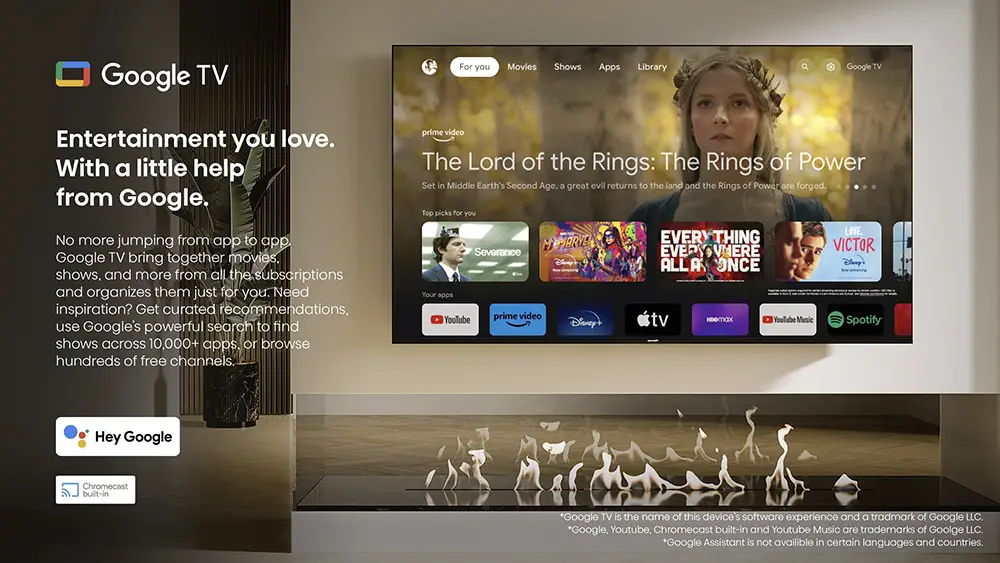
Google TV 12.0
For those that still cannot distinguish the difference between Google TV and Android TV, things are pretty simple.
Google TV is still Android TV but with an extra layer on top of it. Think of it like how it works with Android smartphones. Most manufacturers that sell Android smartphones, use on top of the default UI their own UI layer that gives this extra something to their phones to make them unique both in appearance and functionality.
The same is with Google TV. You still basically use Android TV at its core. But there is this extra Google TV layer on top in order to make the UI feel different both in looks and functionality.
Google TV seems to have been designed around recommendations, either it be movies, TV shows or applications and this seems to be the main focus of all the latest OS in general. During setup the wizard asks you of what specific streaming services you use in order to customize the Home screen recommendations.
With Google TV things feel more fluent, more direct and more easy to navigate around.
Google TV on the U7K was as smooth an experience as it gets. Navigation was fast while opening and closing apps was relatively fast without any noticeable delays. We can say that, from the looks of it, the U7K performed the same as the U8K here.
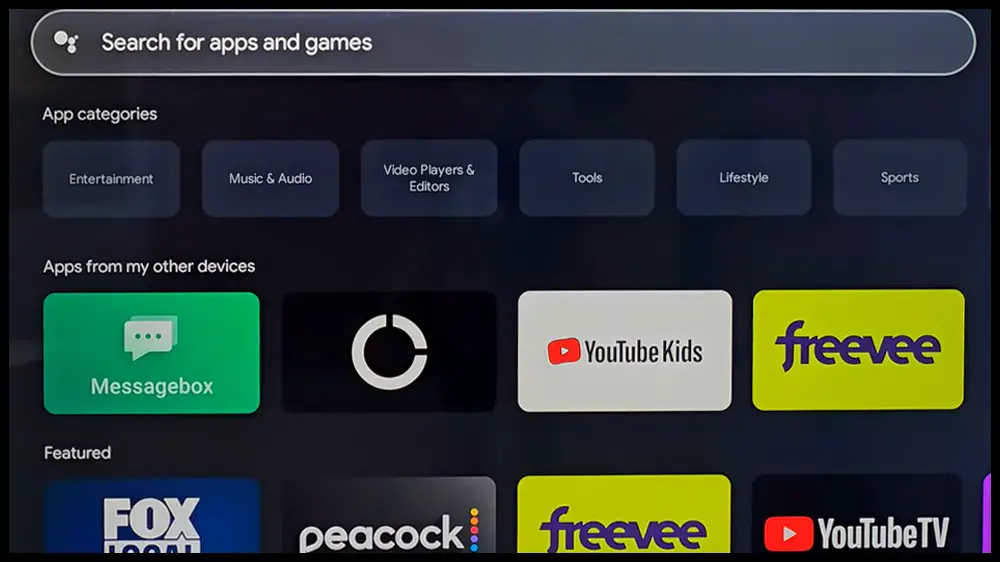
Streaming Capabilities
If there is one thing that Google TV has in abundance that is huge app support. Through the included Google Play Store you can find literally thousands of apps that you can download and use. Except from the pre-installed ones of course. There is so much content available that you will hardly miss anything.
All the big names are obviously present like Google TV, Disney+, Netflix, Amazon Video, Hulu, HBO Max, Apple TV and Youtube. There is also Pandora, Tidal, Google Play Music, Spotify and iHeartRadio to name a few.
As always some of them are region dependent so make sure the ones you are interested in are working in your area. Lastly many apps like Netflix and Youtube support playback for both 4K and HDR content for those interested in it.
Various Connectivity Features
Chromecast is also available here and it gives you the ability to stream content from other Chromecast enabled devices like mobile phones and tablets directly to the TV.
We also get support for both Apple Airplay 2 and HomeKit, which is now named Apple Home. With Airplay 2 you can stream content from other Apple devices on your TV while Apple Home lets you control certain aspects of the TV through your mobile device.

Voice Control
Voice control is also present as per usual. Hisense included both Google Assistant and Amazon Alexa in the TV. And both can be accessed from the remote control.
You also have the ability to use Apple’s Siri through Apple Home in case you prefer Apple’s solution.
Compared to other TVs
First in our list is the 2023 LG UR9000 which is slightly cheaper than the U7K. The U7K is far better as it comes with a vastly superior backlight which is capable of far higher peak brightness. Its contrast is also much better as is its color coverage. The U7K also supports Dolby Vision and comes with far more features than the LG. The LG is only better with viewing angles. So the Hisense U7K is the clear winner here.
Next on our list is the 2023 Samsung CU8000 which is actually about $100 more expensive than the Hisense. Nevertheless the U7K is the better TV here also. It has higher brightness, better colors, supports Dolby Vision and has many more features. It also supports HDMI 2.1 which the Samsung does not. Another win for the U7K.
We move on and next is the 2023 Sony X77L. The TV is priced exactly the same as the U7K but still cannot compete with the U7K. The Hisense has better brightness, better colors, better contrast and far more features. It also supports Dolby Vision, HDMI 2.1 and HFR. The X77L is only better with image processing and viewing angles.
Last in our comparison section is the 2023 TCL Q7/Q750G. The TCL is only $50 more expensive so not a big difference here. Actually the TCL may be the only TV that can really challenge the U7K. The TCL did better with SDR brightness while the Hisense was better with HDR brightness. The TCL also seems to have better contrast overall. On the other hand the Hisense has better color coverage and accuracy and better image processing. So each TV has its own strengths here and really depends on what you want the most.
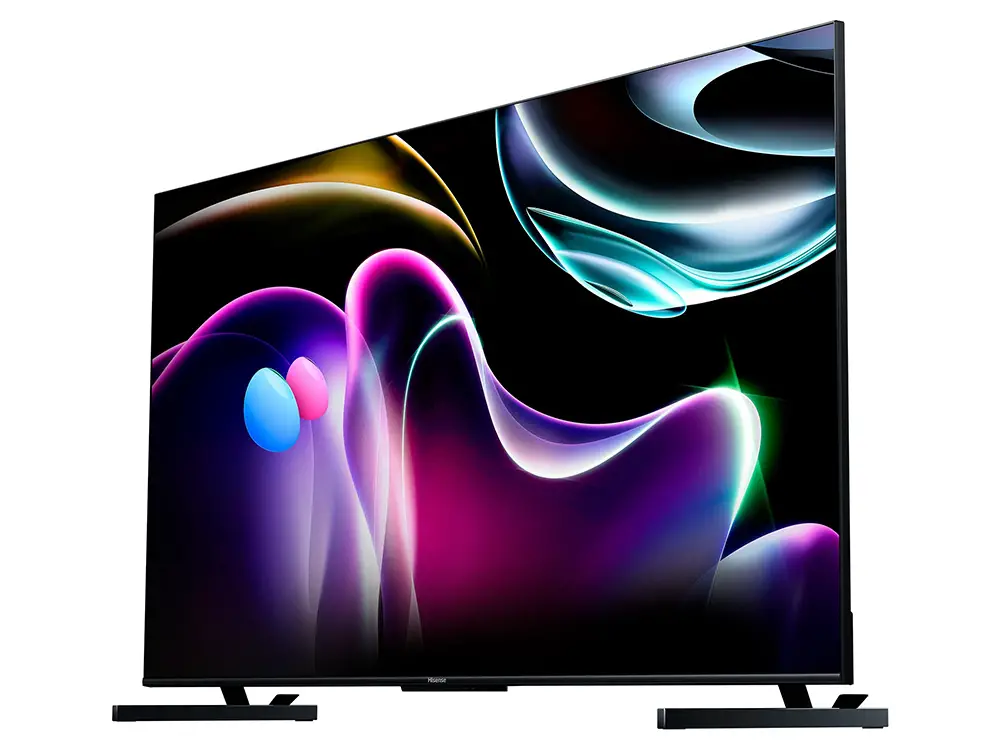
Final Thoughts
Hisense has another stellar year under their belt and if the U8K gave us a small taste of what to expect this year, the U7K proved that they have little to no competition with their offerings.
The Hisense U7K is an excellent TV in its price offering very good features across the board. A really good backlight with nice brightness, great colors and contrast, good accuracy and upscaling and a vast array of online, offline and gaming features.
On the other hand with such a lucrative price certain corners surely had to be cut. Blooming is visible in certain scenes while viewing angles leave a lot to be desired. Also two HDMI 2.1 ports may not cut it anymore as Samsung and LG offer 4 ports for a few years now. Lastly the audio is just enough for casual use and is in no way on par with the TV’s visual prowess.
We reached the end of our Hisense U7K review and after all the testing we did we can say with certainty that Hisense is the king in this price category. The U7K performed the best in most categories and all other brands should take notes from Hisense on how to properly price a TV. If you want very good performance on a budget we cannot think of a better choice than the U7K, period.
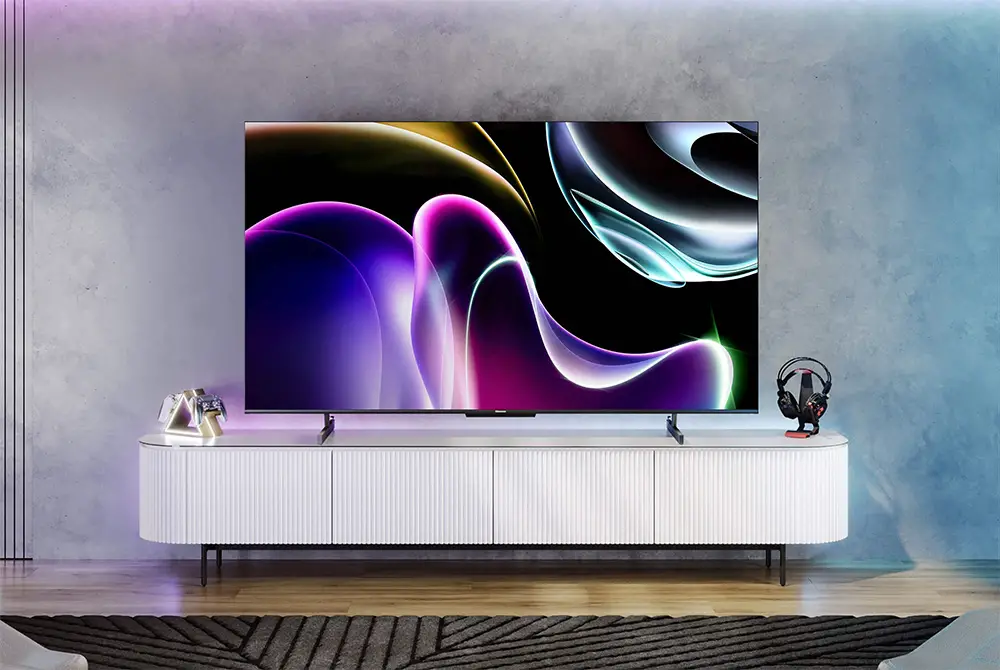
For more reviews you can check our dedicated 4K LED LCD TV reviews list or even look at our Product Reviews Table where you can find the brand and specific product you are looking for.
Cheapest Places to Buy :
*We are a reader-supported website. When you buy through links on our site, we may earn a small affiliate commission at no extra cost to you. Home Media Entertainment does not accept money for reviews.*



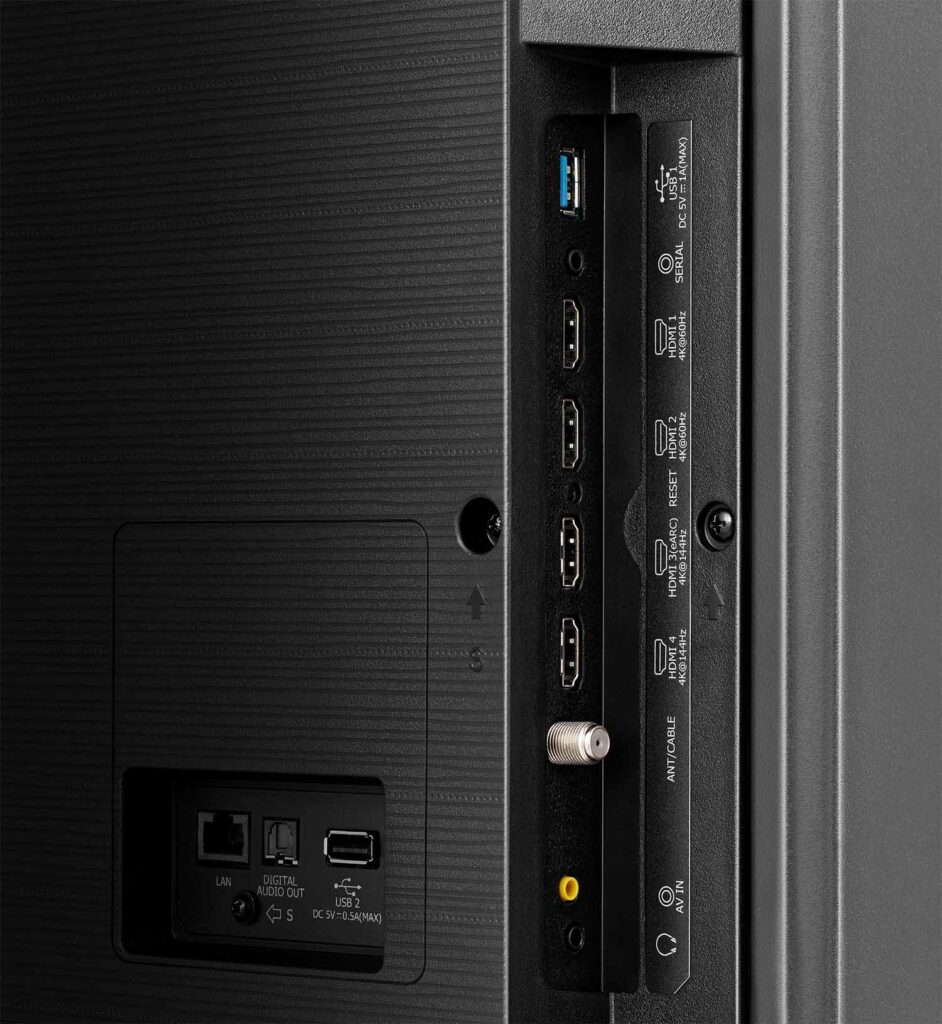
I am looking at options now for a replacement TV and the Hisense U7K is one model I am considering. In my search for user feedback on the model, your review showed up. You did an amazing job reviewing this TV. Literally, everything I was concerned about was addressed, and much more. I never expected to see such a detailed review to be honest.
Thanks and excellent work on your part!
Thank you Dave. If you need further assistance let us know in the comments.
Thanks, Stratos, I like reading your reviews.
It’s interesting, but in your section comparing the U7K to other TVs with similar specs, you generally argue that the U7K is the best – apart from the TCL. So, I wonder, do you find that “big-name” brands rely a little too much on being “big-name” brands and don’t necessarily have products of the very highest quality?
Cheers,
Simon 😉
Hello Simon. The U7K is better because it has the best performance in the same price range. And yes I strongly believe that the big three (Samsung, LG, Sony) rely a lot on their brand prowess to drive sales. And this is the reason why you see Hisense and TCL so aggressive with their pricing policies.